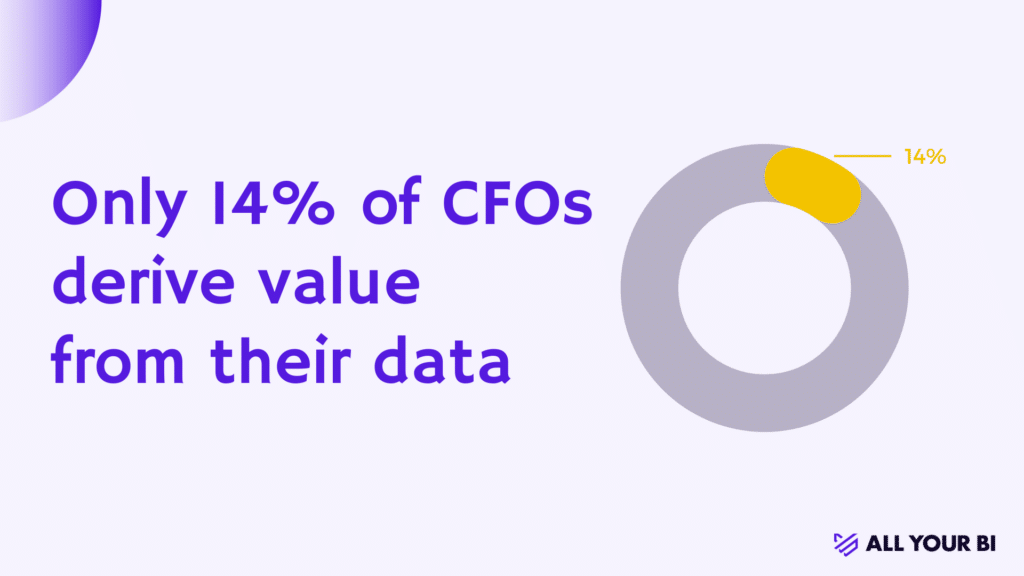

Spoiler alert! Data in fancy dashboards does not make an organization data-driven.
Even though that is the general expectation. Fiddle with some data, develop a couple of dashboards, and hey presto…you’re data-driven. {Insert magic ?}
If only…being data-driven involves a lot more than fancy KPIs and cool dashboards. It is a mindset! I spend a large amount of my time trying to convey that mindset. Data-driven working requires a change in behavior in all layers of the organization and inevitably produces resistance. As a Business Intelligence product owner it is my task to remove that resistance and to facilitate the transformation during BI consultancy projects.
With this blog I take you on a journey through my approach, which I applied to organizations, including KPN, Unit4, and ING, to bring about a transformation from gut feeling to a data-driven mindset and approach. An approach that can be applied to any organization, irrespective of its size or the sector.
The steps below are not linear. Try to see it as a cycle you complete and optimize continuously.
1. Create a new reporting rhythm
At the weekly meeting or MT session, you look at the same figures together. Managing data is more than converting your data into dashboards; rhythm and discipline are just as important. By looking at the same figures, you start to see developments over time, understand anomalies, and detect trends.
The time between actions taken, for example, a price adjustment, and its result in the sales figures becomes much shorter as a result. The insight this produces ensures that you get a better understanding of your business and the market.
When all goes to plan, every MT session – particularly in the beginning – will generate at least ten more questions.
For example, consider a rising turnover but a falling margin. Why? How did we perform compared to last year? In which region do we sell most of product x? Or, what I’m seeing here, is that right?
This is the most important step towards being a data-driven organization: using data based on questions from the business.
2. Cleaning, adding, and reviewing data
Answering these questions requires more data, data sources, and analyses. That is often the moment you realize what is still missing in the way of data and insights. Or that your data is contaminated due to poorly set-up processes and definitions. Garbage in = garbage out.
Now data becomes a tool that has to answer questions from the organisation.
This is where the second important part of my work begins. As Product Owner it is my task to channel the questions and requests from the MT, to test their technical feasibility, prioritize, and translate them to the rest of the organization. In doing so, I reduce the pressure on the organization, I remove resistance and I can manage the expectations of the MT.
3. Harmonise processes and definitions
Invoices sent, hours worked, updating a CRM. Lots of data in an organization continues to be produced by people. You discover that not everyone does it in the same way. Or worse still, that there are no processes at all. To guarantee the quality of your data, you need to set up processes and tighten up definitions.
When hours are recorded, it is possible to apply a whole range of definitions. One employee includes travel time as declarable time, and another doesn’t.
As Product Owner, it is my role to harmonize these differences in definitions and processes together with the organization. In practice that means getting all the stakeholders together to arrive at the required actions together. As a Product Owner, I encourage this process and I use data as substantiation concerning my stakeholders.
4. Serve the organization with data and insights
You will realize that cleaning up data and harmonizing processes is demanding for your organization. Sometimes the demand is such that it produces resistance in the organisation and the project incurs delays.
It requires a lot from your people to continue entering all that data properly following the right processes and the right frequency. It quickly becomes a “chore” that nobody needs.
To remove that resistance you need to make sure your people experience the value of their data from day one. For example:
- Involve your most important internal stakeholders in the change process from the beginning.
- Give managers and teams access to their dashboards where they can see the result of their work.
- Give every employee insight into, for example, his declarations and compare those with the department.
By involving people from the beginning and giving them access to their data, you make them part of the change process and they experience the value of Business Intelligence. This is a really important step in removing resistance in the organization.
As a Business Intelligence Product Owner, I facilitate the process by increasing the data knowledge in the organization with training sessions, coaching, and access to dashboards. By considering the quality of the data together with the organization and by understanding its impact, I take the organization with me in the process. Together we prepare improvement initiatives to tighten up processes and definitions.
5. 5. Embed responsibility in the data chain
Insight on its own is not enough to transform the organization into a data-driven organization. The various layers of the organization have to take their responsibility for the result.
Ask MT members and team leads to explain the figures in their domain periodically and to make small analyses. MT members who take responsibility and are in control will discuss those figures periodically in their team. They will detect any anomalies and trends at an early stage and will implement improvement actions.
That neatly takes us back to step 1.
This sense of responsibility will ensure that MT members will facilitate their employees in improving and streamlining procedures and processes, which will lead to a higher quality of data in the dashboards.
As soon as the data is correct, the team can act on the result. By completing this process continuously, a transformation will occur where the organization will become data-driven. Now everyone experiences data as a tool to do their work better and to see its results.
A smooth transformation requires a good Product Owner
A good Product Owner knows the magic ingredient of a data-driven mindset: ownership!
Ownership starts with the MT. The MT is the driving force behind change, improvement, and responsibility within the organization. It is the owner of all the figures in the business and if they are not correct, it is up to the MT to make them so. The perfect moment to transfer ownership to the organization. Often this happens by throwing ad-hoc questions and requests at the organization.
And this is where it all goes wrong:
- These ad-hoc questions and requests are often highly abstract and general;
- The organization has no sight of the underlying need/question;
- The answer/analysis does not meet the need and leads to more questions;
- The specific knowledge and expertise are missing in the organization;
- Working out all these ad-hoc questions and requests is massively time-consuming, time people prefer to spend on their “real” work.
That leaves an enormous disconnect between the information needed by the MT and what the organization can provide. The result is resistance in the rest of the organization every time the MT chucks another question at the organization.
A good Product Owner knows how to guide and accelerate this process.
By acting as the intermediary, the Product Owner can translate between the MT and the rest of the organization.
With his expertise and experience, a Product Owner knows to ask the right questions and to recognize the underlying need. Once identified, he then knows how to find and connect the right people in the organization. Together they can then arrive at valuable insights in the form of improvement initiatives, analyses, or dashboards for the MT.
By spending time with the organization, the Product Owner makes the organization part of the process. He facilitates the change and improvements as it were by creating insights together with the organization and initiating improvement initiatives. Insight and improvement initiatives the organization is committed to.
The ultimate result will be visible quickly in the all-singing, all-dancing dashboards the MT – all things being equal – looks at every week.


